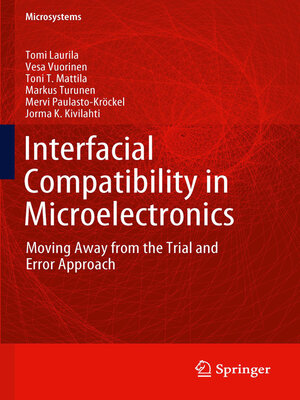Interfacial Compatibility in Microelectronics
ebook ∣ Moving Away from the Trial and Error Approach · Microsystems
By Tomi Laurila

Sign up to save your library
With an OverDrive account, you can save your favorite libraries for at-a-glance information about availability. Find out more about OverDrive accounts.
Find this title in Libby, the library reading app by OverDrive.



Search for a digital library with this title
Title found at these libraries:
| Library Name | Distance |
|---|---|
| Loading... |
Interfaces between dissimilar materials are met everywhere in microelectronics and microsystems. In order to ensure faultless operation of these highly sophisticated structures, it is mandatory to have fundamental understanding of materials and their interactions in the system. In this difficult task, the "traditional" method of trial and error is not feasible anymore; it takes too much time and repeated efforts. In Interfacial Compatibility in Microelectronics, an alternative approach is introduced.
In this revised method four fundamental disciplines are combined: i) thermodynamics of materials ii) reaction kinetics iii) theory of microstructures and iv) stress and strain analysis. The advantages of the method are illustrated in Interfacial Compatibility in Microelectronics which includes:
solutions to several common reliability issues in microsystem technology,
methods to understand and predict failure mechanisms at interfaces between dissimilar materials and
an approach to DFR based on deep understanding in materials science, rather than on the use of mechanistic tools, such as FMEA.
Interfacial Compatibility in Microelectronics provides a clear and methodical resource for graduates and postgraduates alike.







